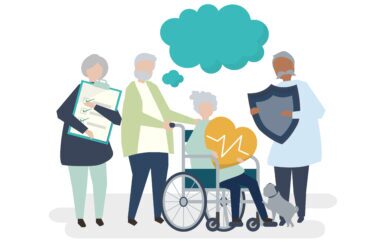Neglected tropical diseases (NTDs) cast a long shadow over some of the world’s most vulnerable populations. Unlike diseases that dominate headlines, NTDs receive a fraction of the global or regional attention and resources. Yet, they silently wreak havoc on the lives of millions living in poverty, trapping them in a cycle of ill health and economic hardship.
This blog outlines the impending impact of NTDs and why it is essential to address them on an urgent basis.
A Global Crisis With Devastating Consequences
NTDs are primarily common among impoverished communities in tropical regions, although some have a much wider geographical spread. This diverse group of chronic infectious diseases is approximated to affect more than 1 billion people, while the number of people needing NTD interventions (both preventive and curative) is 1.6 billion.
These diseases, while often preventable and treatable, disproportionately burden impoverished communities in tropical and subtropical regions. The World Health Organization (WHO) has created a list of 20 NTDs, each with its own unique characteristics but sharing a common thread: they disproportionately impact people living in poverty.
The consequences of NTDs are devastating. These diseases can cause chronic illness, disability, and even death. They rob individuals of their ability to work, attend school, and participate completely in their communities. In children, NTDs can hinder physical and cognitive development, perpetuating the cycle of poverty across generations.
A Spotlight On Two Neglected Diseases
To understand the true impact of NTDs, let’s delve into two specific examples:
Chagas Disease: This parasitic infection, transmitted by insects known as kissing bugs, silently destroys heart tissue over decades. Imagine the invisible threat this poses to individuals in impoverished communities, often lacking access to quality healthcare. Early diagnosis is crucial, but limitations in diagnostic tools often lead to delayed detection and irreversible damage. Thankfully, recent advancements in medications like benznidazole offer hope for shorter treatment durations.
Lymphatic Filariasis: This debilitating disease, caused by parasitic worms transmitted by mosquitoes, leads to grotesque swelling of limbs and other body parts. The social stigma associated with this condition can be as devastating as the physical symptoms. Fortunately, mass drug administration (MDA) programs offer a powerful tool for prevention. However, consistent funding and community engagement are crucial for the success of these programs.
Victories And The 2030 Roadmap
Despite the challenges, there are glimmers of hope. The elimination of Guinea worm disease in 2016 stands as a testament to the power of international collaboration and targeted interventions. This success story is a beacon of hope, demonstrating that even the most neglected diseases can be conquered.
The WHO’s 2030 NTD Roadmap provides a clear path forward. This ambitious plan outlines specific goals for controlling and eliminating ten NTDs by 2030. The roadmap emphasizes innovation, calling for the development of new diagnostics, vector control methods, and treatment options.
Combating The Neglected – Innovative Solutions For Healthcare
The fight against NTDs demands innovative healthcare solutions that cater to the specific needs of impoverished communities. Here are some key areas of focus:
- Beyond Drugs – Rethinking Vector Control: While medication plays a role, tackling the root cause of NTD transmission is crucial. Traditional insecticide-treated nets (ITNs), effective against some mosquito-borne diseases, have limitations for NTDs transmitted by other vectors. Research into alternative vector control methods, such as environmental management and biological control, is essential.
- Technology As A Weapon: Diagnostics and Digital Tools Rapid diagnostic tests (RDTs) are revolutionizing NTD diagnosis, allowing for early detection and treatment initiation in remote areas. Imagine a healthcare worker in a rural village equipped with an RDT, enabling them to diagnose and treat lymphatic filariasis on the spot.
Digital platforms hold immense potential in disease surveillance, patient education, and even telemedicine consultations. These tools can bridge the geographical gap, connecting patients in underserved regions with healthcare expertise.
Collaboration Is Key – Uniting For A Healthier Future
The fight against NTDs demands a united front. Collaboration across various sectors is essential for maximizing the impact of healthcare solutions. Governments, NGOs, pharmaceutical companies, and most importantly, the affected communities themselves, all have a role to play.
- Funding The Fight: Insufficient funding remains a critical challenge. Public-private partnerships and novel financing mechanisms can help bridge the resource gap.
- Research And Development: The pipeline for new NTD drugs and diagnostics is limited. Increased investment in research is pivotal to developing effective and affordable treatments that address the specific needs of impoverished communities.
- Community Engagement: Empowering affected communities is crucial for the success of NTD control programs. Community-based education, participation in program design, and ownership over interventions are essential for long-term sustainability.
Final Thoughts
Neglected tropical diseases are a silent threat, robbing millions of a healthy and productive life. By promoting innovation, bolstering healthcare solutions, and encouraging collaboration, we can make significant progress in tackling these neglected diseases. You can be part of the solution. Here’s how:
- Raise Awareness: Spread the word about NTDs! Share information with friends and family on social media.
- Support Organizations: Numerous organizations are dedicated to fighting NTDs. Research and donate to reputable NGOs working on the ground to deliver healthcare solutions and empower communities.
- Advocate For Change: It is recommended to contact your local representatives and request them to prioritize funding for NTD research and control programs.
Together, we can turn the tide on neglected tropical diseases. By amplifying awareness, supporting innovative solutions, and advocating for change, we can create a future where everyone, irrespective of their background, has admission to the healthcare they deserve. Let’s work towards a world free from the burden of NTDs, where communities can thrive and reach their full potential.
Previous Blog: [Integrating Genomic Analysis Into Clinical Practice For Personalized Care]














